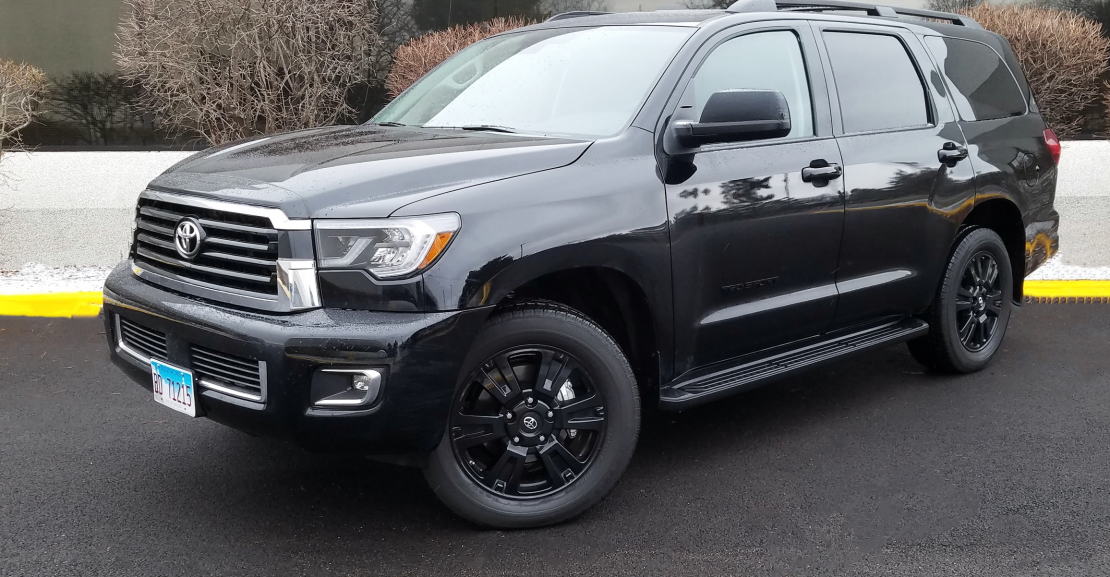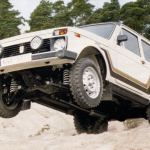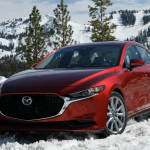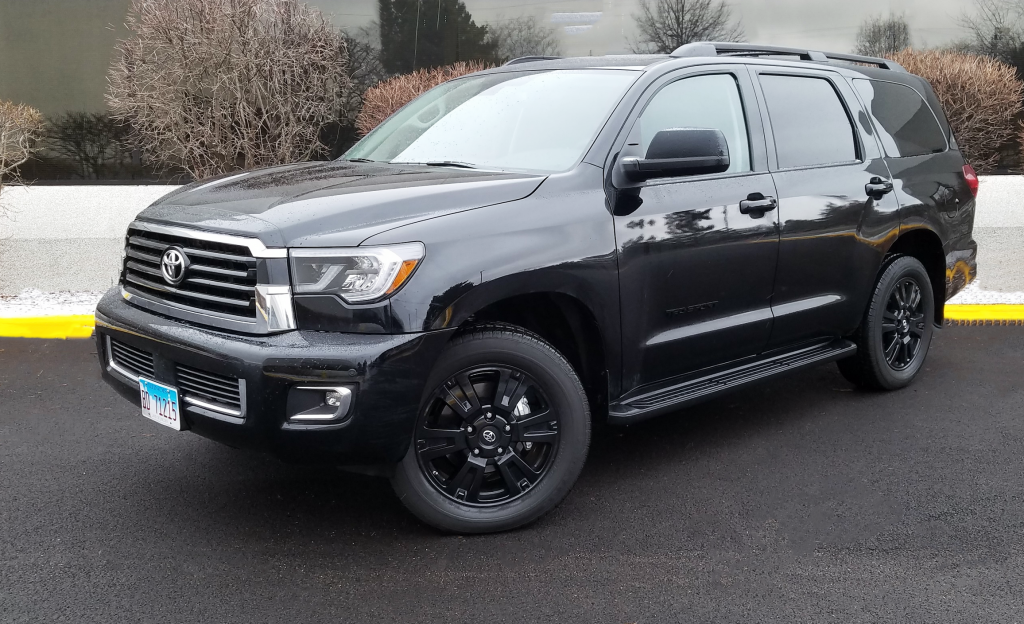
 2019 Toyota Sequoia TRD Sport 4X4
2019 Toyota Sequoia TRD Sport 4X4
Class: Large SUV
Miles Driven: 1138
Fuel Used: 74.0 gallons
Real-world fuel economy: 15.4 mpg
Driving mix: 30% city, 70% highway
EPA-estimated fuel economy: 13/17/14 (city, highway, combined)
| CG Report Card | |
|---|---|
| Room and Comfort | B+ |
| Power and Performance | B+ |
| Fit and Finish | B- |
| Fuel Economy | D |
| Value | B- |
| Report-card grades are derived from a consensus of test-driver evaluations. All grades are versus other vehicles in the same class. Value grade is for specific trim level evaluated, and may not reflect Consumer Guide's impressions of the entire model lineup. | |
| Big & Tall Comfort | |
| Big Guy | B+ |
| Tall Guy | B |
| Big & Tall comfort ratings are for front seats only. "Big" rating based on male tester weighing approximately 350 pounds, "Tall" rating based on 6'6"-tall male tester. | |
Fuel type: Regular gasoline
Base price: $54,640 (not including $1295 destination charge)
Options on test vehicle: TRD Sport Premium package ($3810), All-Weather Floor Liners ($199)
Price as tested: $59,944
Quick Hits
The great: Good ride quality and better handling than might be expected of a vehicle this size
The good: Muscular powertrain, spacious cabin
The not so good: Dismal fuel economy, Sequoia’s basic design is the oldest in the large SUV class, and it shows
More Sequoia price and availability information
John Biel
Apparently, the folks at Toyota who are responsible for the Sequoia sport-utility vehicle tuckered themselves out in 2018. The essential design of this body-on-frame large SUV dates to 2008, and in some years—2019 being one of them—no significant change touches the vehicle line. That was virtually assured when the ’18 model picked up standard Toyota Safety Sense P driving aids, blind-spot and rear cross-traffic alerts, a freshened front fascia and dashboard, and a new TRD Sport model.
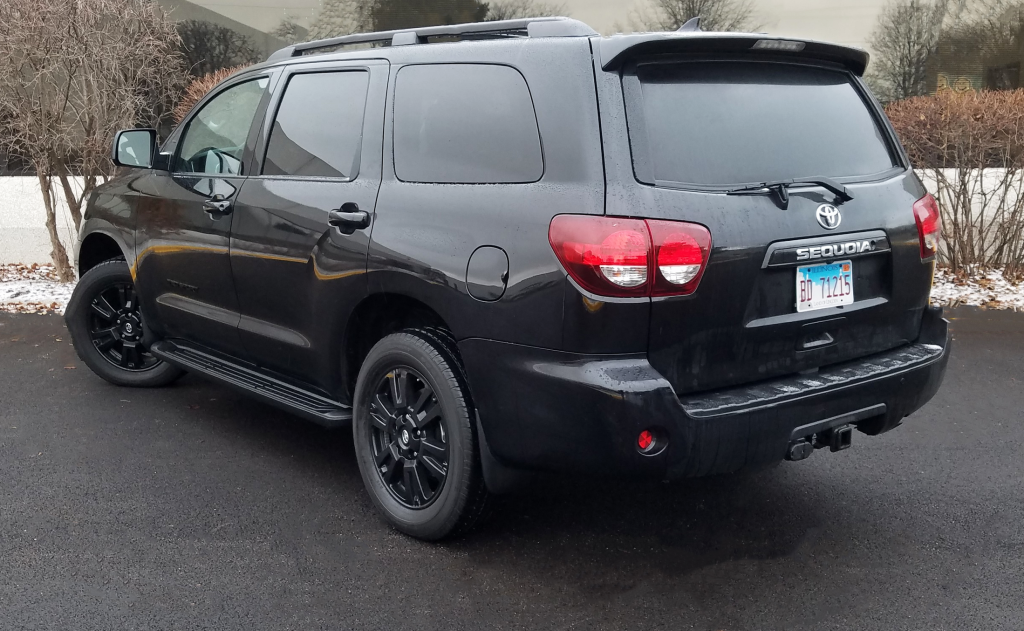
Time to take a knee.
In this quiet period Consumer Guide has the chance to try out the newcomer to the Sequoia catalog. The TRD Sport slots between the entry-level SR5 and the second-from-the-top Limited. It features some distinctive trim items inside and out, but also adds different suspension tuning.
Test Drive: 2019 Toyota Tacoma TRD Pro
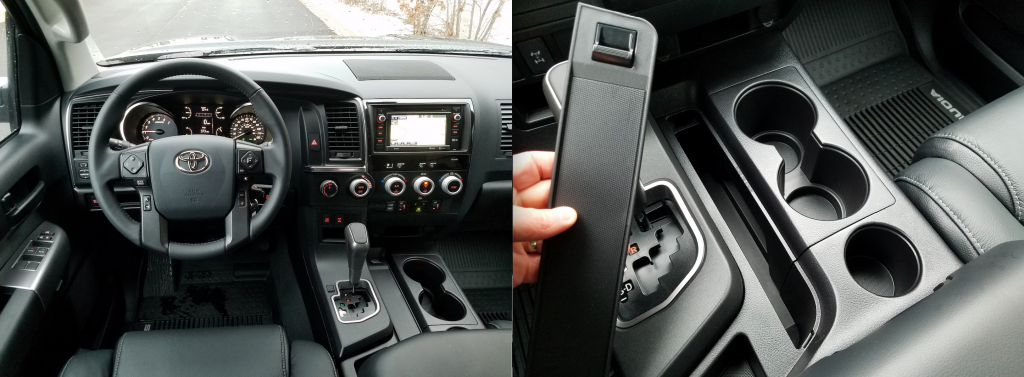
You’ll know a 2019 Toyota Sequoia TRD Sport when you see one coming because it rolls on 20-inch black alloy wheels, is fronted by a gloss-black grille with a chrome surround, and has satin-black “TRD Sport” badges on the front doors. (CG’s tester came painted Midnight Black Metallic for an overall look that might be best described as “collapsed star.”) Inside are TRD-branded doorsill plates, shift knob, and embroidered floor mats.
Test Drive: 2019 Chevrolet Silverado LT Trail Boss
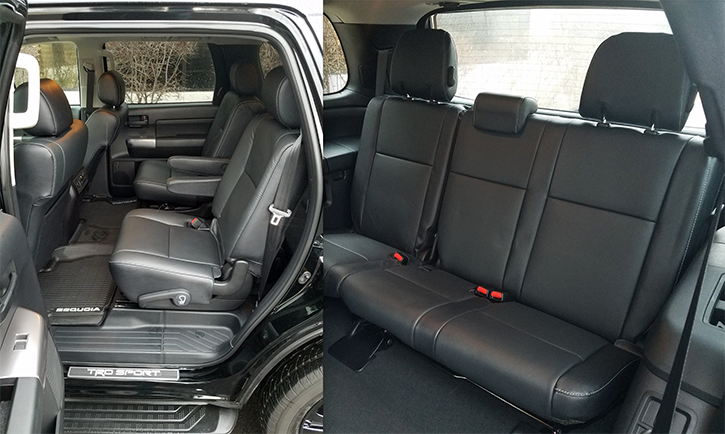
The Toyota Racing Development parts you’re more likely to feel than see are the tuned Bilstein shock absorbers and front and rear antisway bars. Even with them some degree of lean remains in cornering—how could it not from something this size and height?—but the big Sequoia Sport is not especially bouncy on its fully independent suspension. It steers relatively quickly and feels a little nimbler in traffic than a 122-inch-wheelbase vehicle that weighs almost 6000 pounds might be expected to be. Indeed, this driver was surprised to be able to flick the tail a little while making a sharp left turn from a standing start in 2-wheel mode on dry pavement.
Test Drive: 2019 GMC Yukon XL Denali
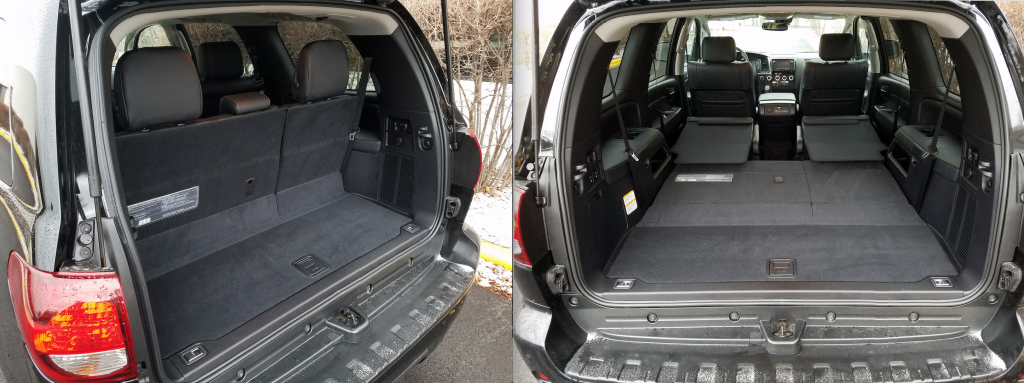
All Sequoias have the same powerteam, a 5.7-liter V8 and 6-speed automatic transmission. The engine produces 381 horsepower at 5600 rpm and 401 lb-ft of torque at 3600 revs. It is strong and responsive. Prompt transmission kickdown, even at highway speeds, makes for effortless passing. Four-wheel-drive models like the tested vehicle include a Torsen limited-slip center differential with locking feature. An easy-to-use dial on the dash switches from 2-wheel drive to 4-wheel High or Low. The Sequoia has a towing capacity of 7100 pounds as a 4×4, or 7400 pounds as a rear-wheel driver.
First Spin: 2019 GMC Sierra AT4
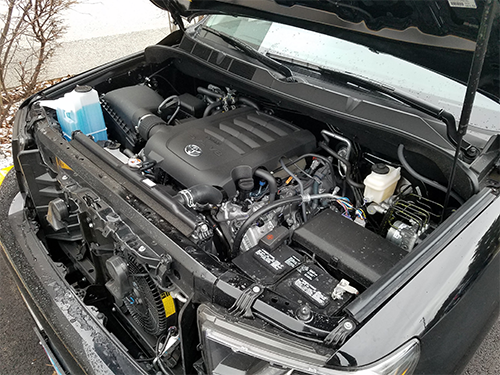
Naturally, bulk and a big engine do not a gas-sipper make. EPA estimates for the 4WD Sequoia are just 13 mpg in city driving, 17 on the highway, and 14 combined. This reviewer saw 13.8 mpg from his turn in the truck, a 218-mile stint that included 50 percent city-type driving.
In the miles between visits to the gas station passengers will find themselves stretching out in very roomy first and second rows, and a third row that is eminently acceptable for a couple of adults or three kids. Standard seating in the TRD Sport is for seven, with individual captain’s chairs in the middle row. Seats in the first two rows are comfortable and supportive, with wide cushions. Access to the rear row is possible with a minimum of squirming either behind or between the adjustable-track captain’s chairs. Standard running boards are a boon to entry and exit, and driver vision through large windows is good in practically any direction.
A lot of the interior surfaces in the Sport seem soft to the touch but they’re not padded save for door centers, armrests, and the broad console lid. The tilt/telescoping steering wheel is leather trimmed, and the test vehicle had optional leather upholstery in place of the standard cloth.
The Sequoia cabin is well fixed for personal storage. There are twin glove boxes; the massive console box with an adjustable tray for small items; a long, narrow, and deep covered cubby to the right of the shifter; large door pockets with twin bottle holders; pouches on the backs of the front seats; and a mix of exposed and covered bins in the third-row sidewalls. Front passengers get open cup holders in the console, middle-row occupants have cup holders that pop out of the back of the console at floor level (where they are a bit of a reach), and rear-seat denizens will find receptacles inset in the sidewalls.
Test Drive: 2018 Toyota Sequoia
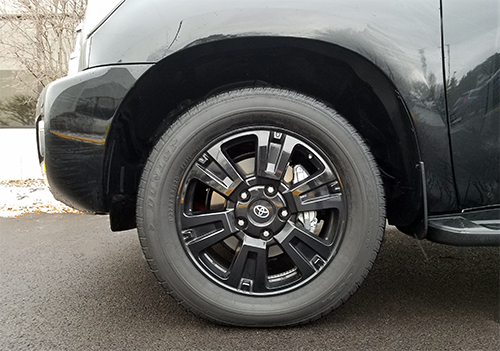
With all seats in use, there’s limited rear cargo space, though the bumper-height floor panel can be removed to open a wide section that’s several inches deep—or be left in place for hidden storage. Load capacity improves a lot when the 60/40 rear seats are retracted. Really large cargo can be carried when the second-row seats are lowered. Hinged panels on the backs of the captain’s chairs swing down to bridge a gap that exists between the second-row seats and the rest of the cargo floor.
Given its age, the Sequoia lacks a number of items that regularly pop up on newer vehicles—for instance, Apple CarPlay or Android Auto device interfaces. Some items that are included in the $55,935 starting price of the 4WD TRD Sport are LED headlights; heated power exterior mirrors; power moonroof; roof rack; rear spoiler; engine and transfer-case skid plates; tri-zone automatic climate control; power-adjustable driver’s seat; and an easily programmed audio system with an 8.1-inch touchscreen, and HD and satellite radio. The Safety Sense P suite bundles pre-collision warning and mitigation, pedestrian detection, lane-departure mitigation, adaptive cruise control, and automatic high-beam headlights. A set of all-weather floor liners and a Premium option package with leather upholstery, power-retracting third-row seats, navigation, and more resulted in a full-delivered price of $59,944 for the example CG tested.
The Sequoia isn’t the biggest of the large SUVs, and it certainly isn’t the most up to date. However, it’s still quite capable and it displays different personalities across its four trim levels. That’s what this established Toyota rests on.
2019 Chicago Auto Show: 2020 Toyota RAV4 TRD Off-Road
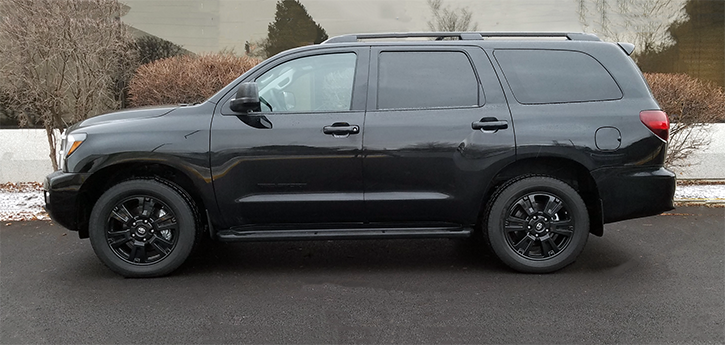
What is the difference between 4WD and AWD?
2019 Toyota Sequoia TRD

